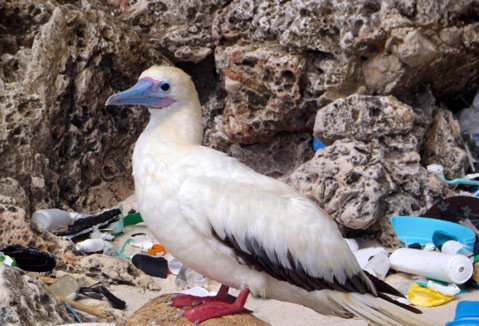New Study Estimates High Plastic Levels in Seabirds
UCSB Researchers Say Approximately 90 Percent of Seabirds Have Eaten Plastic

According to a new study published Monday in the Proceedings of the National Academy of Sciences, approximately 90 percent of seabirds have eaten plastic. The study — inspired by a marine debris working group at UCSB’s National Center for Ecological Analysis and Synthesis (NCEAS) and authored by Chris Wilcox, senior research assistant at Australia’s Commonwealth Scientific and Industrial Research Organisation (CSIRO) Oceans and Atmosphere Flagship — discovered that almost 60 percent of seabird species, albatrosses, penguins, and shearwaters included, have plastic in their stomachs.
Wilcox contributed to a similar study published earlier this year, conducted by the same working group at NCEAS, which found that over 4.8 million metric tons of plastic enters the oceans from land annually.
Denise Hardesty, co-author and member of the NCEAS working group, says the high levels of plastic in seabirds come as no surprise because the animals reflect the ecosystem’s health. “Finding such widespread estimates of plastic in seabirds is borne out by some of the fieldwork we’ve carried out where I’ve found nearly 200 pieces of plastic in a single seabird,” she said.
Most plastic comes from bottle caps, bags, and plastic fibers from synthetic clothes that have washed into the ocean via rivers, sewers, and other waste sources. When birds consume brightly colored plastic, mistaking it for food, they may suffer fecal impaction, weight loss, and death.
Researchers’ analysis of studies from 1960 to 2010 reveal an alarming increase in plastic among seabirds. In 1960, less than 5 percent of seabirds had plastic in their stomach compared to 80 percent in 2010. If the trend continues, 99 percent of seabird species will have ingested plastic by 2050.
The new study — also co-authored by Erik van Sebille of the Grantham Institute at Imperial College London — predicts that plastics will have the heaviest impact on diverse seabirds species that gather in the South Ocean near South America, South Africa, and Australia. However, scientists remain hopeful that simple improvements to waste management will help lower plastic levels in the ocean.



